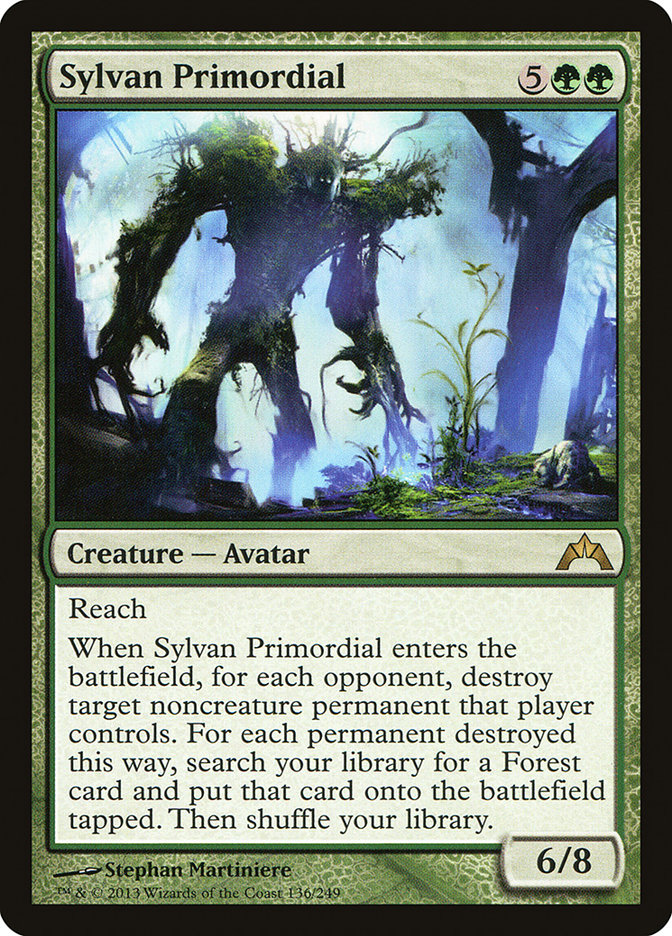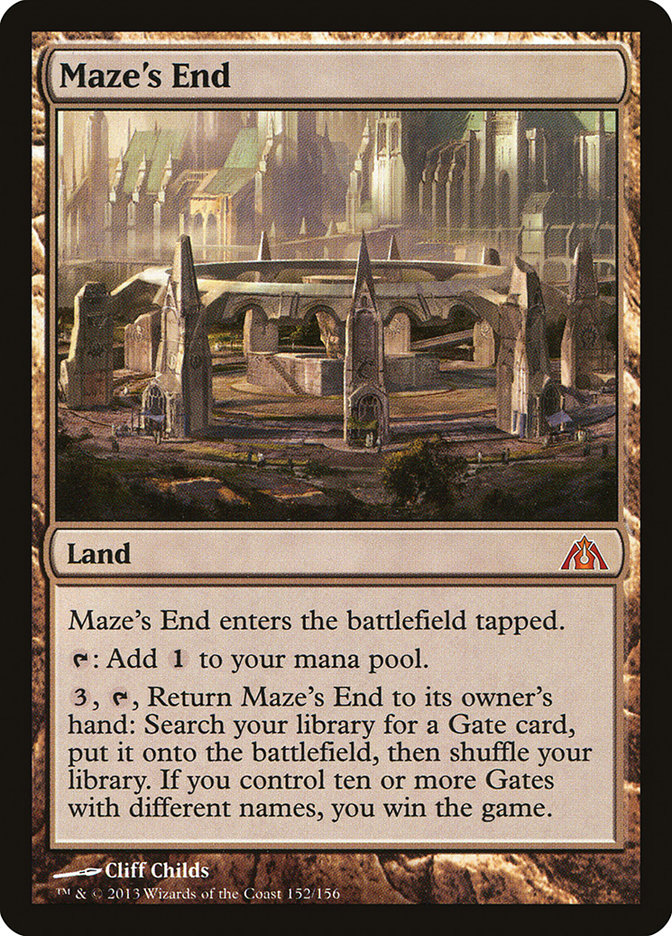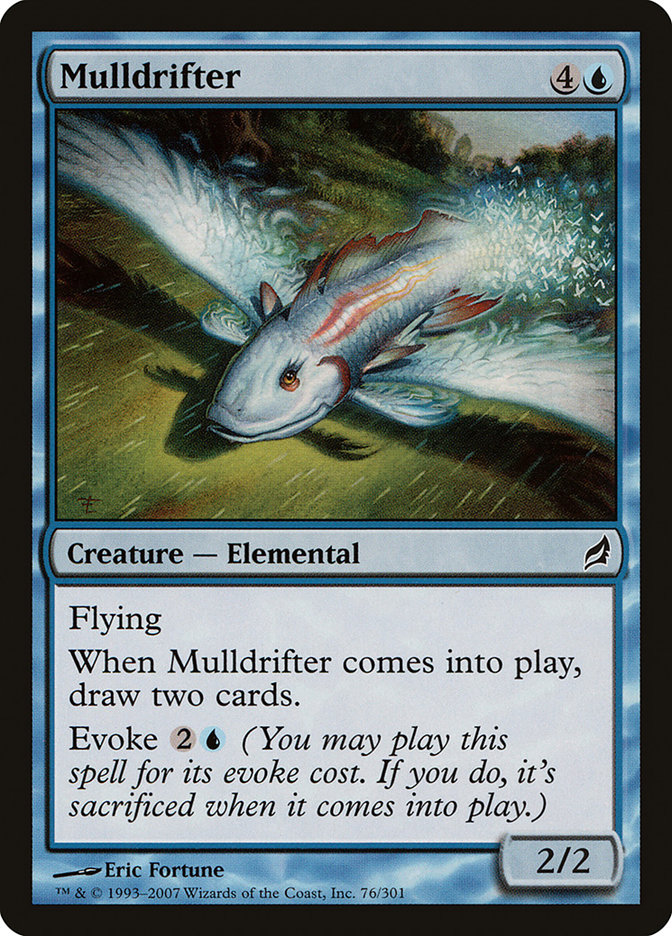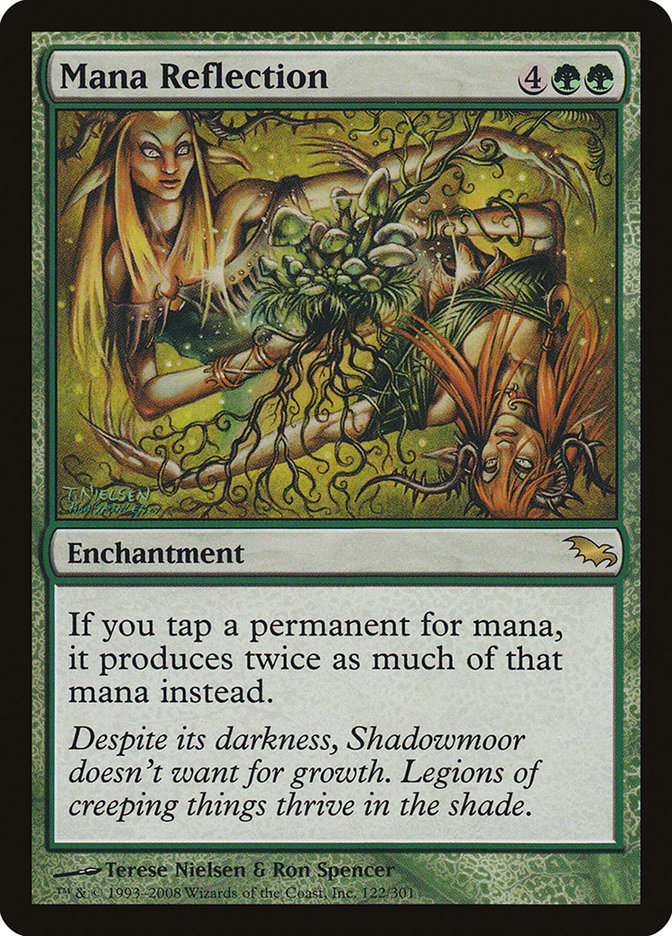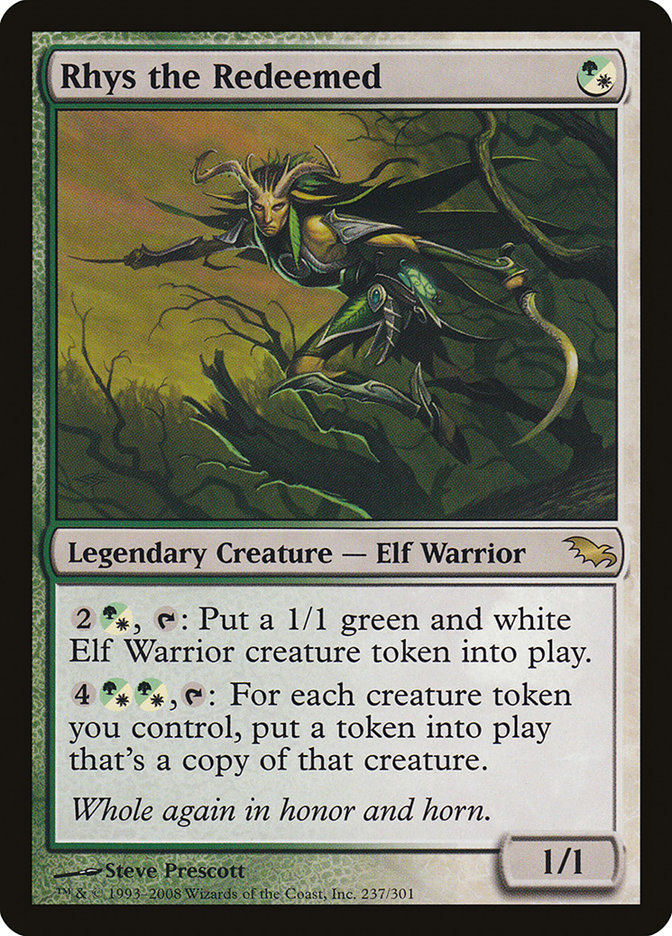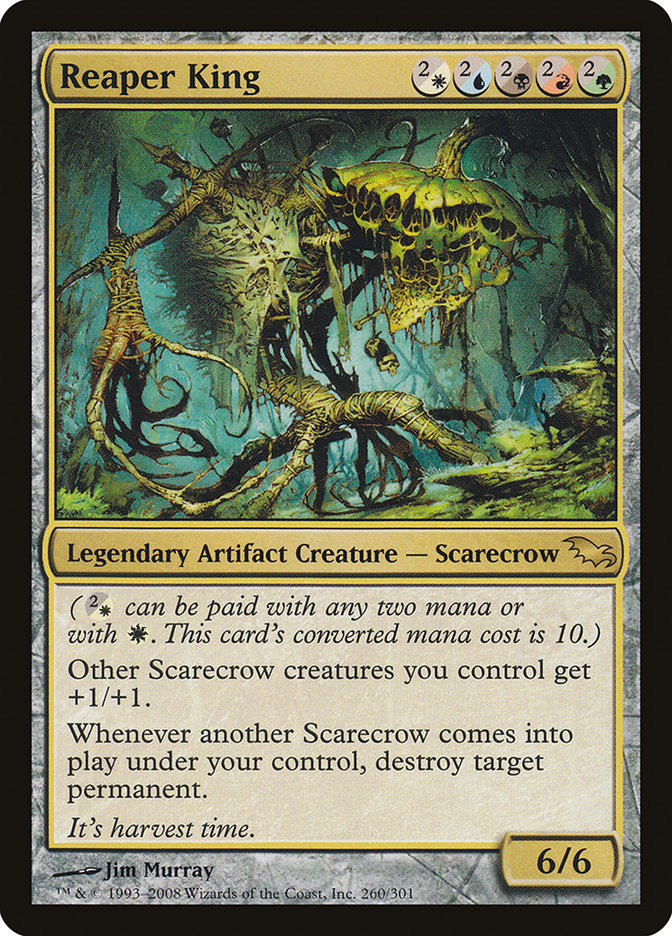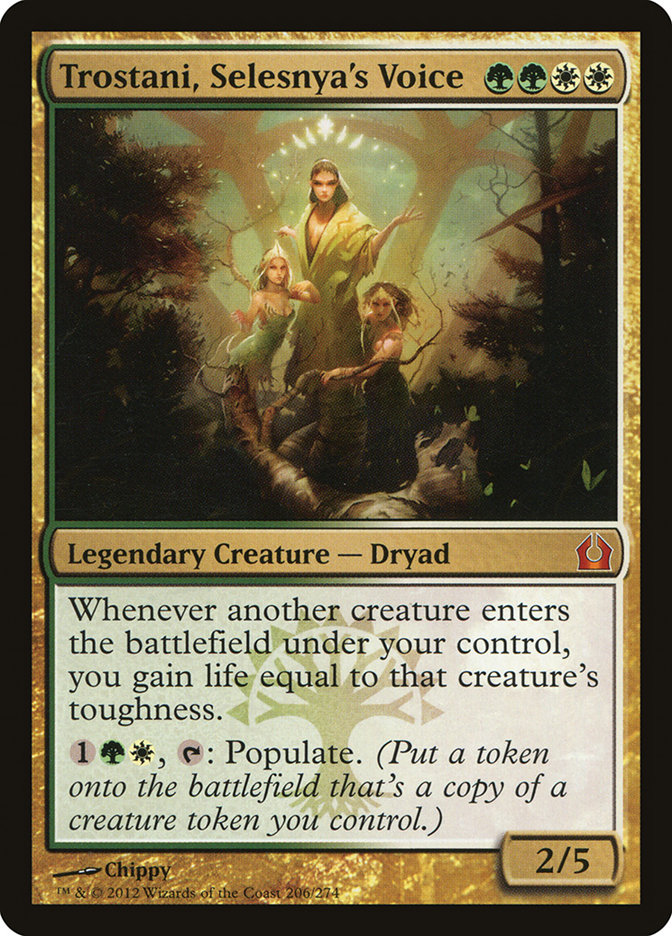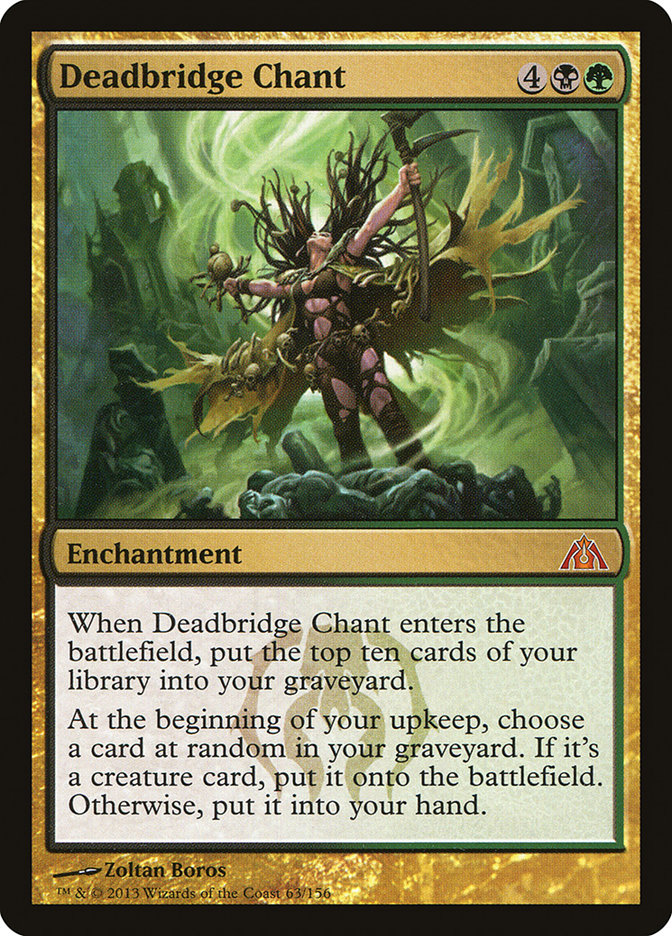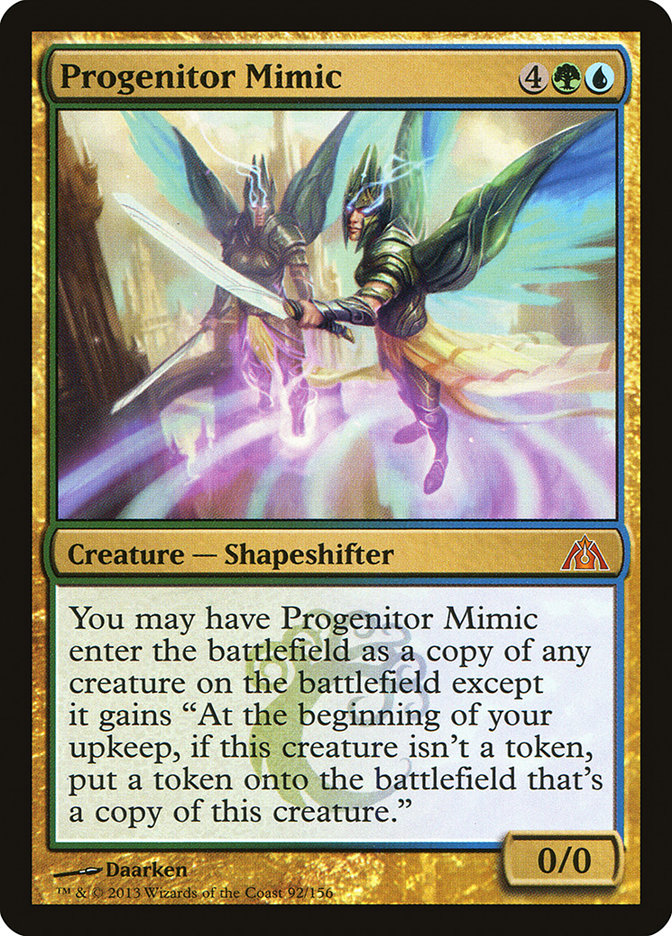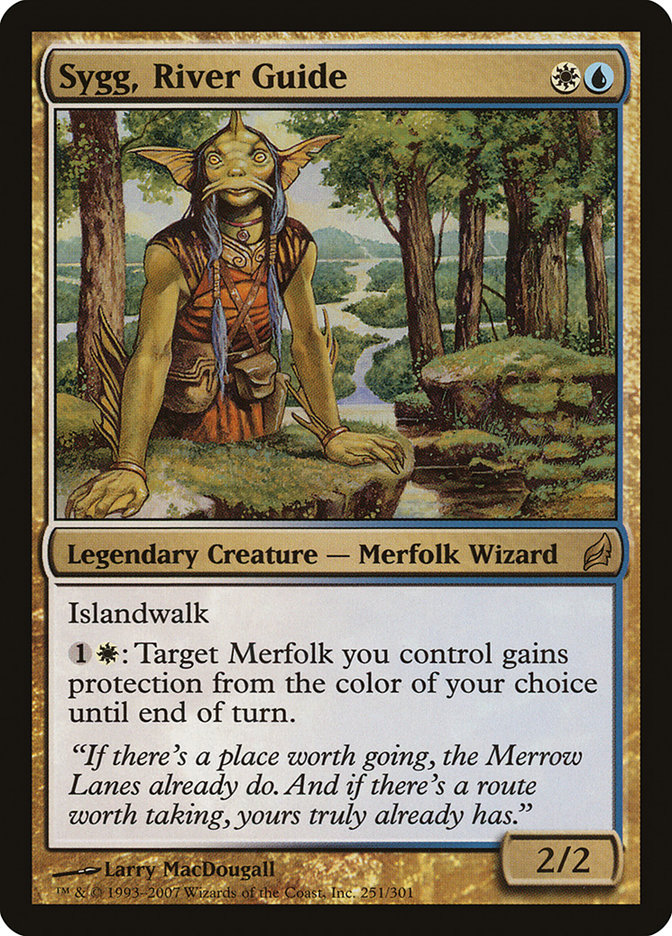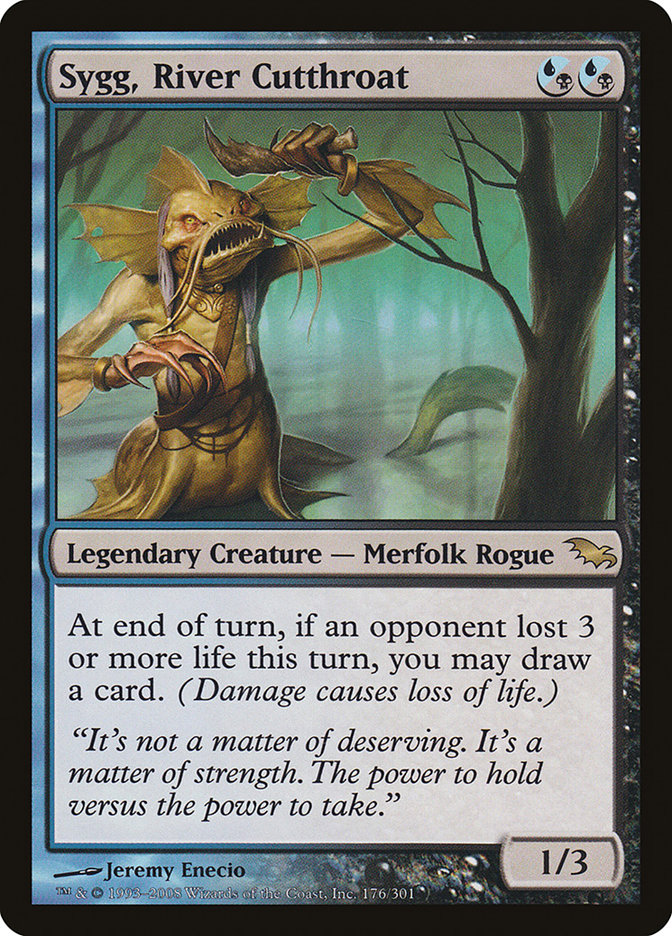Four fierce competitors have broken their way into the top of the Battle Of The Blocks competition and will vie against each other to emerge victorious as the best block for Commander. The best of the best—Ravnica, Time Spiral, Lorwyn-Shadowmoor, and Return to Ravnica block—bring unique cards and mechanics to the Commander format that outshined the rest of the competitors in our head-to-head competition. Each of these blocks play well in a multicolor setting, and this polychromatic power has been the main push behind both Return to Ravnica and Ravnica block.
Return to Ravnica block is the youngest full block in this competition, riding the design coattails of its older brother Ravnica block to some hard-fought wins. The battle against Innistrad block was the first time we got to fully examine Return to Ravnica within this competition, and its multiple mechanics and better legends guided it beyond the gothic horror of one of Magic’s most popular sets. Zendikar block was the next challenger that the young Return to Ravnica block stared down and subsequently defeated with its superior mana fixing compared to a block that was dedicated to lands. In this battle, Return to Ravnica block’s stable of staples and great legends will go head-to-head with the oversized Lorwyn-Shadowmoor block.
The Battle Of The Blocks is a competition built to find the block that contributed the most to the Commander format, and the block that has the greatest upfront potential to win is Lorwyn-Shadowmoor. It not only plays well with the multicolor trend in Commander, but it’s the first place people look for the tribal decks that make up a sizeable percentage of the Commander format. Whether it’s Elves, Goblins, Merfolk, Druids, Soldiers, or even Badgers, Lorwyn block gives players the tribal unity they crave with the tribal card type and changeling mechanic. This two-pronged attack of great multicolor synergies and tribal strategies led to Lorwyn-Shadowmoor block past Mirrodin and Alpha-Revised to arrive at the Top 4 of the Battle Of The Blocks.
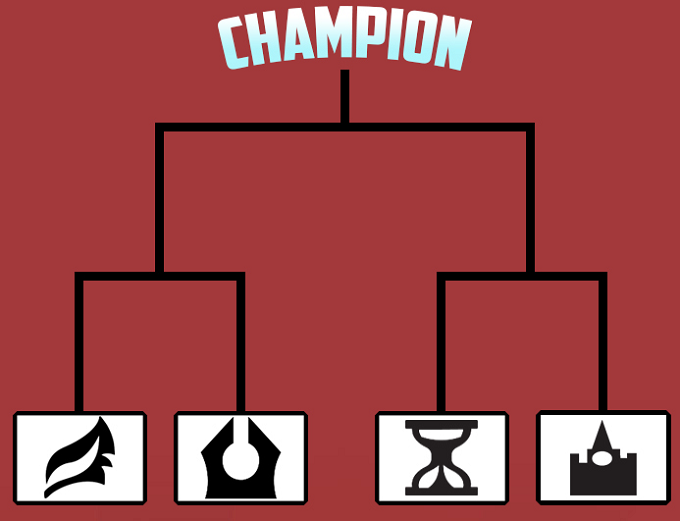
The margin between these four blocks is incredibly slim, and choosing a victor will require some greater criticism than in the beginning rounds. The Staples section has been expanded to fit ten staples instead of the usual five to showcase the greater requirements at the end of the competition. Remember, these battles are to decide which block contributed the most to Commander, not the best block in all of Magic. They will be compared in the usual five categories: Staples, Commanders, Strategies, Flavor, and The Bad.
Staples
Ten Notable Staples From Return To Ravnica
1) Cyclonic Rift
2) Sylvan Primordial
3) Chromatic Lantern
4) Supreme Verdict
5) Guild gates, Keyrunes, Cluestones
6) Sepulchral Primordial
7) Rest in Peace
8) Underworld Connections
9) Maze’s End
10) Merciless Eviction
This list of ten staples is fantastic. Two of the strongest cards in the format, Cyclonic Rift and Sylvan Primordial, come from Return to Ravnica block and are driving forces in the current Commander metagame. The mana fixing in this block puts the land-based Zendikar block to shame with the trio of Guildgates, Keyrunes, and Cluestones for low-priced mana fixing and Chromatic Lantern as an easy solution for the more ambitious three-color and above mana bases.
The graveyard is never safe with Sepulchral Primordial around, but Rest in Peace has found a solid place in the format as an easy way to utterly destroy any graveyard-based strategy. Maze’s End deserves a mention here for its heavy inclusion in five-color decks as both a win condition and easy way to fix mana. It has become an important part of most five-color strategies and will remain so for some time.
Ten Notable Staples From Lorwyn-Shadowmoor
1) Mulldrifter
2) Filter Lands
3) Oblivion Ring
4) Garruk Wildspeaker
5) Reveillark
6) Vivid Lands
7) Jace Beleren
8) Mana Reflection
9) Farhaven Elf
10) Austere Command
I still haven’t seen a blue Commander deck without Mulldrifter, and I don’t think I will for a very long time. The simple five-mana flying Gray Ogre works so well in the most commonly played strategies in Commander that it’s a near guarantee in blue decklists. The same can be said of the original planeswalkers. It’s crazy to think that Garruk Wildspeaker and Jace Beleren debuted nearly seven years ago, but here they are still going strong!
Mana Reflection’s popularity peaked two years ago when its ability to create massive amounts of mana was relatively unmatched in Commander. Mana Reflection would have made the previous Top 5 if the printing of Boundless Realms hadn’t usurped its position as the best way to generate insane amounts of mana, but it still fits well here at the #8 spot.
Verdict: These two blocks are very close in this category, with each block displaying a great Top 10 for the Commander format. The popularity of some of the cards from Return to Ravnica is due to its relative freshness in an Eternal format like Commander. Lorwyn block has been around for almost seven years, and its cards still remain relevant in today’s format. The incredible popularity of Cyclonic Rift and Sylvan Primordial will be tempered with time as their novelty wanes. The fact that Garruk Wildspeaker and Jace Beleren still see heavy play in this format is a sign of their power and one of the interesting subplots running within Lorwyn-Shadowmoor block.
Lorwyn-Shadowmoor block barely wins this perfectly matched category because of its continued impact on the format after its new-card luster has been wiped away. Return to Ravnica block still put up an impressive showing and is in no way out of this competition yet.
Commanders
The Commanders section is an important part of this competition and is the place where these battles are often won and lost. The Commander product coasted to a Top 8 berth with its impressive showing in this section, and the amazing Alpha-Unlimited block, with cards like Wrath of God and Volcanic Island, lost in this section because legendary creatures didn’t exist when its cards were made.
The one weakness of Lorwyn-Shadowmoor block is its generals. Rhys, the Redeemed was the shining star of this block because of his position as the top G/W Token general in Commander until Trostani, Selesnya Voice decided to knock him off his high horse into the #2 spot. Rhys, the Redeemed is still an amazing general in the popular G/W Token archetype whose utility from the command zone deserves immense respect, leaving this Elf with a strong position in the current Commander metagame.
Two five-color generals come from Lorwyn-Shadowmoor block, with Horde of Notions commonly leading the Elemental tribe into battle and Reaper King heading a control or Scarecrow deck. The popularity of those two generals is low, and the other impactful legends from this block, Oona, Queen of the Fae and Doran, the Siege Tower, only see moderate play in tribal or good-stuff decks.
After a year in the pits of Commander, the new-card smell begins to wash away from the legendary creatures, and it becomes easy to tell which generals will stand the test of time. Trostani, Selesnya’s Voice will remain popular in Commander as the default G/W Token general due to its low populate cost and its deceivingly powerful Angel’s Chorus ability. It isn’t uncommon for a Trostani, Selesnya’s Voice deck to win the game at 84 life while swinging with a horde of tokens, and that’s what will keep her relevant for a very long time. Prime Speaker Zegana has asserted herself as a force to be reckoned with in Commander by performing extremely well in a Simic value shell that uses the legendary Merfolk as a way to recoup card advantage in the face of repeated sweeper effects or discard spells.
Two other generals that will continually sit on the moderate to high level of play are the electrifying Melek, Izzet Paragon and Aurelia, the Warleader. Aurelia might be the missing piece to the Boros puzzle, as Wizards of the Coast finally gave us a great W/R general to beat control into submission. Melek, Izzet Paragon has become the go-to legend in Izzet because of his low profile compared to the other commanders in these colors. No longer will the Izzet player be the first person to die because opponents are worried about turn 5 Eldrazi from Jhoira of the Ghitu or combo finishes with Niv-Mizzet, the Firemind. Melek coasts under the radar compared to his peers and sees heavy play because of it.
Verdict: This section is a little more one-sided as Return to Ravnica block takes it with quality commanders that are both functional and fun. Lorwyn-Shadowmoor’s golden child Rhys couldn’t redeem its okay showing in this category, and it takes a loss.
Strategies
Return to Ravnica excels in this section just like its big brother Ravnica block due to its ten distinct guilds that bring new mechanics and establish the flavor of the ten color pairs in Magic. The most important mechanics from a strategy-defining perspective are populate and evolve. The populate mechanic of Selesnya added another avenue of victory to the already popular G/W Token deck through a continual multiplication of the best token on the board. This increased the occurrence of cards like Mimic Vat and Phyrexian Processor in G/W decks while creating another source of continual card advantage, saving the sweeper-prone token strategy from expelling their entire hand onto the board only for it to be wiped away.
Evolve, just like graft from Ravnica block, strengthened the Simic counter decks with an easy way to acquire +1/+1 counters to multiply and move around. Cards like Renegade Krasis and Fathom Mage create +1/+1 counters in a productive way for this strategy to duplicate while developing a commanding board position.
We can find Lorwyn-Shadowmoor block’s greatest contributions to the Commander format in its impact on the popular tribal archetype and its strengthening of multicolored strategies. From a classic tribal viewpoint, Lorwyn block brought multiple new lords to Elves, Goblins, Merfolk, and Soldiers, keeping these races and classes relevant in our Eternal format. Beyond the basic lords of the tribes, cards like Door of Destines and Shared Animosity support any tribe that can muster up enough creatures to attack with.
The wackier tribes in Commander rely heavily on the aforementioned Door of Destinies, and the Lorwyn-specific changeling mechanic created the possibility for wacky tribes to exist. Soon every tribe was playable in Commander, allowing intrepid deckbuilders to form decks built around creature types that have a very small amount of support and spreading the love beyond the Elves, Goblins, and Merfolk to the underutilized Druids, Birds, and Barbarians of the Magic world. Multicolored-focused strategies benefit from the cycle of lords, filter lands, and Demigods in Shadowmoor and Eventide that function as great curve toppers and strong ways to get ahead on the board.
Verdict: This section comes down to which block gave the most to the strategies of Commander, and the tribal-based Lorwyn-Shadowmoor block comes out with a solid win here compared to Return to Ravnica block. Each block did a great job at contributing to a specific subset of decks, but the deeper cuts like Stonehewer Giant, Mistmeadow Witch, and Gilder Bairn are what really push Lorwyn-Shadowmoor block over the top to win this section.
Flavor
The importance of the flavor category truly comes from the casual side of Commander. There’s an entire group of players that immerse themselves into the deckbuilding process to create some amazing inventions, such as decks centered on people wearing hats or a mono-black deck focused on anatomy. Blocks like Return to Ravnica lack these cool twinges of flavor that allow certain cards to stand out when compared to the mechanic-heavy gold spells of the set.
Even fun cards like Deadbridge Chant and Progenitor Mimic fall victim to having no flavor text, and art that really fails at telling what is going on when you cast these amazingly fun spells. The story of the block is also muddled within the mixture of guilds in Return to Ravnica block, creating cards that feel separated from the lore of the Magic universe. Not knowing the true end to the Dragon’s Maze without reading the novel led to confused players and a cycle of ten legends that seemed purposeless.
Lorwyn-Shadowmoor block escaped the pitfalls that Return to Ravnica block fell into by embracing the British folklore theme and flipping it on its head in the later part of the block. The joyful nature of both Lorwyn and Morningtide shows through cards like Cloudgoat Ranger and his band of merry kithkin and the mischievous faeries that steal opponents’ secrets in cards like Knowledge Exploitation.
This warm folklore setting was then flipped in Shadowmoor to create a dark mirror image of the plane where monsters lurked in the shadows. The coolest part about this setting shift was witnessing some awesome story-driven card changes like the cycle of hideaway lands awakening into powerful creatures and specific cards transforming from their light side to their dark side like Fallowsage into Hollowsage. Even the legendary creatures got in on the flavor-changing fun with the gleeful Sygg, River Guide morphing into the bloodthirsty Sygg, River Cutthroat.
Verdict: Lorwyn-Shadowmoor block wins this category by flipping their own British folklore theme on its head and showing players two sides of the same world. Even though Return to Ravnica block further cemented the color pairs into distinct flavor styles, the story-driven flavor of Lorwyn-Shadowmoor block carries the kithkin through this section.
The Bad
The only banned card between these two blocks is Painter’s Servant, which is more of a victim of circumstance than an actual problem. The fact that his ability works so well with cards like Grindstone is why Painter’s Servant isn’t allowed in the format, but it isn’t that offensive when compared to other notable cards on the list like
Worldfire and Griselbrand. Return to Ravnica block doesn’t have a single card on the official Commander banned list, but two cards are currently on the tip of the community’s tongue for future bannings. Sylvan Primordial and Cyclonic Rift are the two most complained about cards in the format due to their heavy board impact in a format that is designed to allow these bombastic spells to be cast. The main issue stems from these cards being abused though rapid mana acceleration or recursive engines to use their impressive abilities more than once a turn.
I disagree with having either of these cards banned due to their inability to actually win the game on their own. Cyclonic Rift is a great card to restabilize the board, but if the player who casts it is without a board position, it’s as effective as an Evacuation. Sylvan Primordial is a more contentious issue that can be dealt with by players running more exile effects in their choice of removal. Both of these cards are still young in the format and need to be dealt with correctly. I think that instead of banning them players need to learn to play around them and beat them. This is a format where Demonic Tutor is legal. I wouldn’t worry about a 6/8 with reach.
Verdict: In a section dedicated to focusing on the bad that some blocks can bring to the format, these blocks are dead even. I’ll give the nudge to Return to Ravnica block for not putting a card on the banned list.
Final Verdict
These blocks are evenly matched, and both deserve to make the finals of this competition. Return to Ravnica block’s new mechanics and awesome high-impact spells kept it competitive in both the Staples and Strategies section, eventually losing out to Lorwyn-Shadowmoor block’s interesting utility cards. Lorwyn’s constant mediocre showing in the Commanders section once again reared its ugly head, as it was beaten by the young Return to Ravnica block’s well-designed guild leader and champion cycles that see heavy play in the current Commander metagame.
The Flavor section was won with the same amount of conviction by Lorwyn block for its great folklore theme and through-the-looking-glass mystique during its block structure. Neither of these blocks was dragged down in The Bad section, leaving the winner of this battle hard to decipher. Let’s check the report card to see if that clears up this incredibly close match:
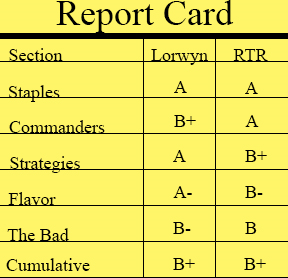
The distance separating these two blocks is smaller than a kithkin’s toenail, but the winner is Lorwyn-Shadowmoor block! This was a great Top 4 battle, and I can’t wait to see who Lorwyn-Shadowmoor block faces in the finals. Will the original Ravnica block make it to the finals and come for vengeance now that baby brother is no longer in the competition? Or will the obscure Time Spiral block future shift its way forward for one more challenge? Join me here next week and we’ll find out!

